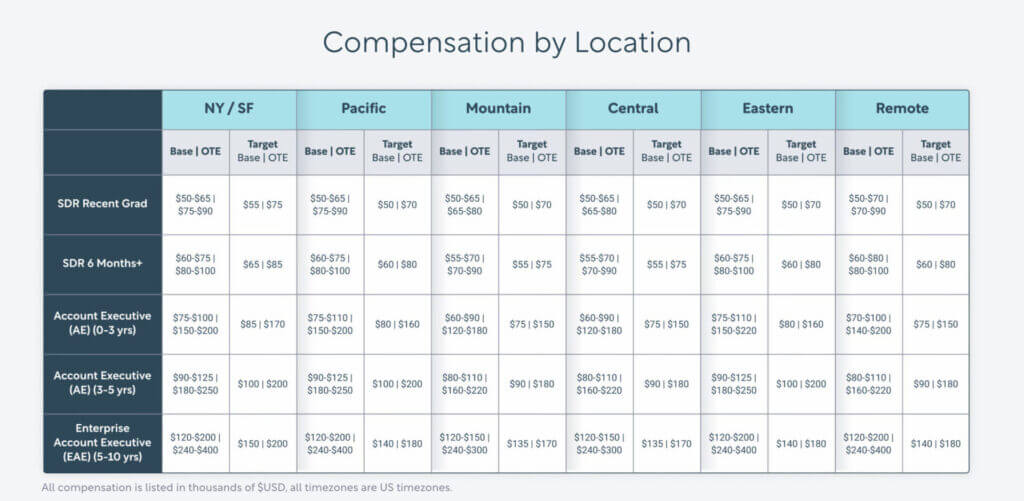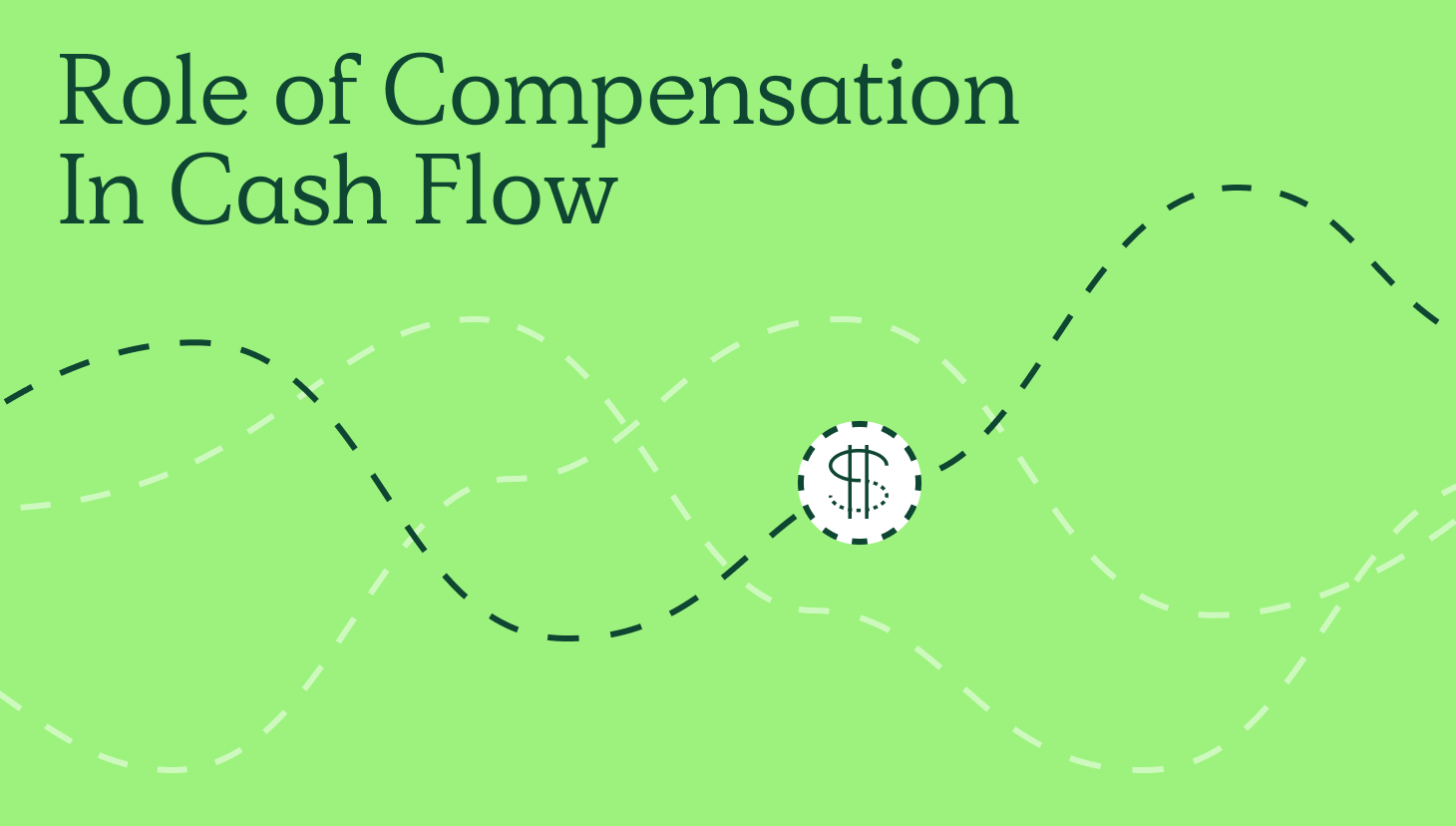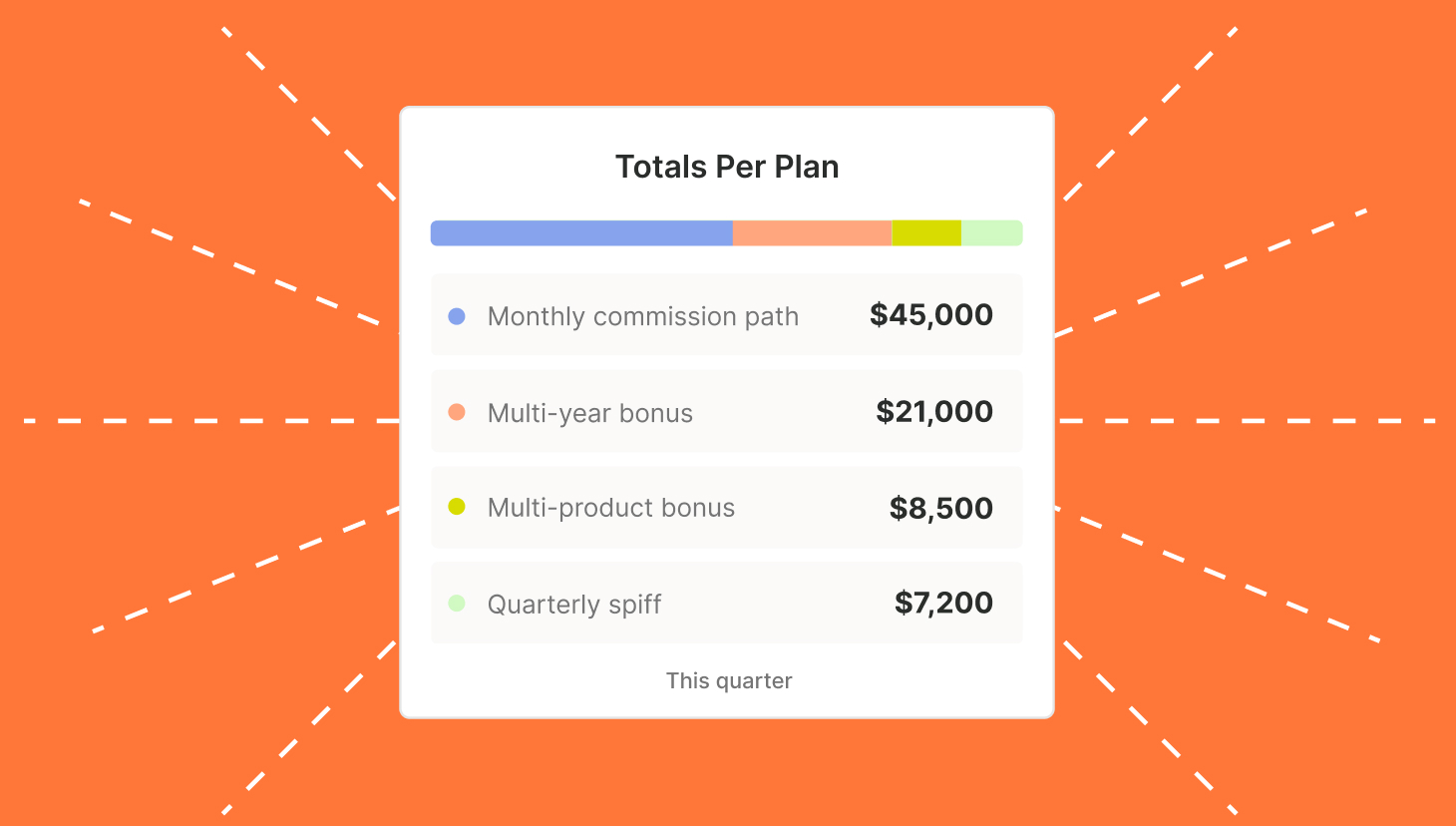Most would agree that a sales rep who spends time threading deals packed with growing relationships should make more than reps who follow a transactional sales motion.
That’s why enterprise sales reps are some of the highest-paid sellers in the tech world.
This difference in selling motions highlights one of the most significant factors affecting sales compensation plans, especially on-target earnings (OTE), but there’s more. Below, we’ve pulled together five of the most important ones to consider when designing sales compensation plans for reps.
OTE trends
According to data from Insight Partners, this year’s largest shift involves less dependency on the rep’s location.
Whereas before, reps working from cities like San Francisco and New York historically held the highest OTEs, now, with a rise in remote work, OTEs are spread more evenly across regions.
Selling motion (consultative vs. solution vs. transactional)
The first factor to consider is the selling motion, which can significantly impact the compensation reps earn.
That’s because consultative sellers, solution sellers, and transactional sellers all have different compensation structures that reflect the different types of sales they make.
Consultative sellers typically have the highest OTEs, as they are responsible for selling complex solutions to high-value customers. These deals typically involve a longer sales cycle and a more complex negotiation process. As a result, consultative sellers need to have a deep understanding of their customer’s needs and be able to develop custom solutions that meet those needs. Both of which come at the cost of a more experienced salesperson — and higher compensation.
Streamline commissions for your RevOps, Finance, and Sales teams
Design, track, and manage variable incentives with QuotaPath. Give your RevOps, finance, and sales teams transparency into sales compensation.
Talk to SalesSolution sellers normally have OTEs lower than consultative but higher than transactional sellers. Solution sellers are responsible for selling pre-defined solutions to customers that involve a shorter sales cycle and less complex negotiations. However, solution sellers still need to have a good understanding of their customer’s needs and be able to explain how their solution can help them achieve their goals.
Lastly, transactional sellers often have the lowest OTEs since they sell low-value products or services with less room for negotiation and tighter sales cycles. Additionally, transactional sellers do not need to have as deep of an understanding of their customer’s needs like a consultative sellers, but they do need to be able to close deals quickly and efficiently.
| Selling Motion | Compensation | OTE |
| Consultative | Highest | Highest |
| Solution | Medium | Medium |
| Transactional | Lowest | Lowest |
Complexity of sale (# of decision makers, sales cycle lengths)
Similar to the selling motion, the complexity of the sale should also dictate your compensation packages for your sellers.
More complex sales, such as those with multiple decision-makers and long sales cycles, typically involve more work and require a higher level of skill and expertise. As a result, sales representatives who sell complex solutions are typically compensated more than those who sell more straightforward solutions and have higher OTEs.
- Number of decision-makers: Sales with multiple decision-makers can be more difficult to close, as each decision-maker may have different needs and priorities. Sellers must build relationships with all decision-makers and develop a solution that meets everyone’s needs. Easier said than done, as this can be a time-consuming and challenging process.
- Sales cycle lengths: Long sales cycles also add to the complexity of a sale. Sellers must maintain long-term relationships with their prospects and keep the sales process moving forward. This can be difficult, especially if the customer is unsure when they are ready to decide.
Complex sales require more work and skill and are accommodated accordingly compared to less-intensive sales.
Role & responsibility (new biz, new biz + expansion, new biz + renewal + expansion)
The role and responsibility of your reps will also dictate their compensation packages.
In previous years, sales representatives responsible for new business typically earned the highest commissions as they brought in new revenue. Meanwhile, reps in charge of new business and expansion or those responsible for new business, renewal, and expansions have historically earned lower commissions.
But that’s starting to change as roles evolve and retention and predictable revenue grow more critical.
Now, we’re seeing commission rates increase for those responsible for renewals, upsells, and, as a result, OTEs. Other trends we’ve picked up on include increased multipliers on multi-year renewals and bonuses for early renewals.
Location (remote vs. specific city/region)
The location of where the rep works used to affect their OTEs and base pay. But following COVID-19 and the necessity of a remote workforce, we’ve seen less of a region’s impact on compensation.
Still, some disparities exist between a rep on the West Coast versus one working from Denver, which you can compare in Betts 2023 Compensation Guide.
Pricing model (consumption/subscription)
Lastly, consider the pricing model of your organization when determining compensation.
A business’s pricing model can have a significant impact on a rep’s compensation. For instance, consumption-based pricing and subscription-based pricing models have very different implications for sales compensation.
Consumption-based pricing: Consumption-based (or usage-based) pricing models charge customers based on how much they use a product or service. This pricing model is often used for SaaS products, cloud computing services, and telecommunications services.
In a consumption-based pricing model, sales reps earn incentive pay based on the revenue they generate from their customers, which aligns the rep’s incentives with the company’s goals of increasing customer usage and revenue.
- Example: A sales rep for a SaaS company earns a commission on all of the revenue that their customers generate from using their product. This incentivizes the sales rep to focus on selling to customers who are likely to use the product heavily, which would increase the company’s revenue.
How to commission on monthly subscription vs. annual subscriptions
Stuck on how to compensate your sales team on monthly versus annual contracts?
Read onSubscription-based pricing: Subscription-based pricing models charge customers a recurring fee to access a product or service used for software products, streaming services, and fitness clubs.
In a subscription-based pricing model, sales reps earn according to the number of new subscriptions they sell.
- Example: A streaming service rep earns a commission on each new subscription that they sell. This would incentivize the sales rep to focus on finding new customers who are interested in subscribing to the streaming service.
The main difference between the two compensation structures is that consumption-based pricing models incentivize sales reps to focus on increasing customer usage and revenue, while subscription-based pricing models incentivize sales reps to focus on acquiring new customers.
OTEs will typically be similar, but the commission rates and payout schedules may vary.
Conclusion
In addition to these five factors, several others can impact sales compensation. However, these five pull the heaviest weight when structuring your sales compensation models.
By understanding these factors, you can design a sales compensation plan that is fair and equitable and that motivates your reps to achieve their goals.
For additional guidance on how to build comp plans and automate your sales compensation process, talk with QuotaPath today. Better yet, build a customized comp plan from one of our trusted templates and see your plan live on our platform by signing up for a free 30-day trial.




